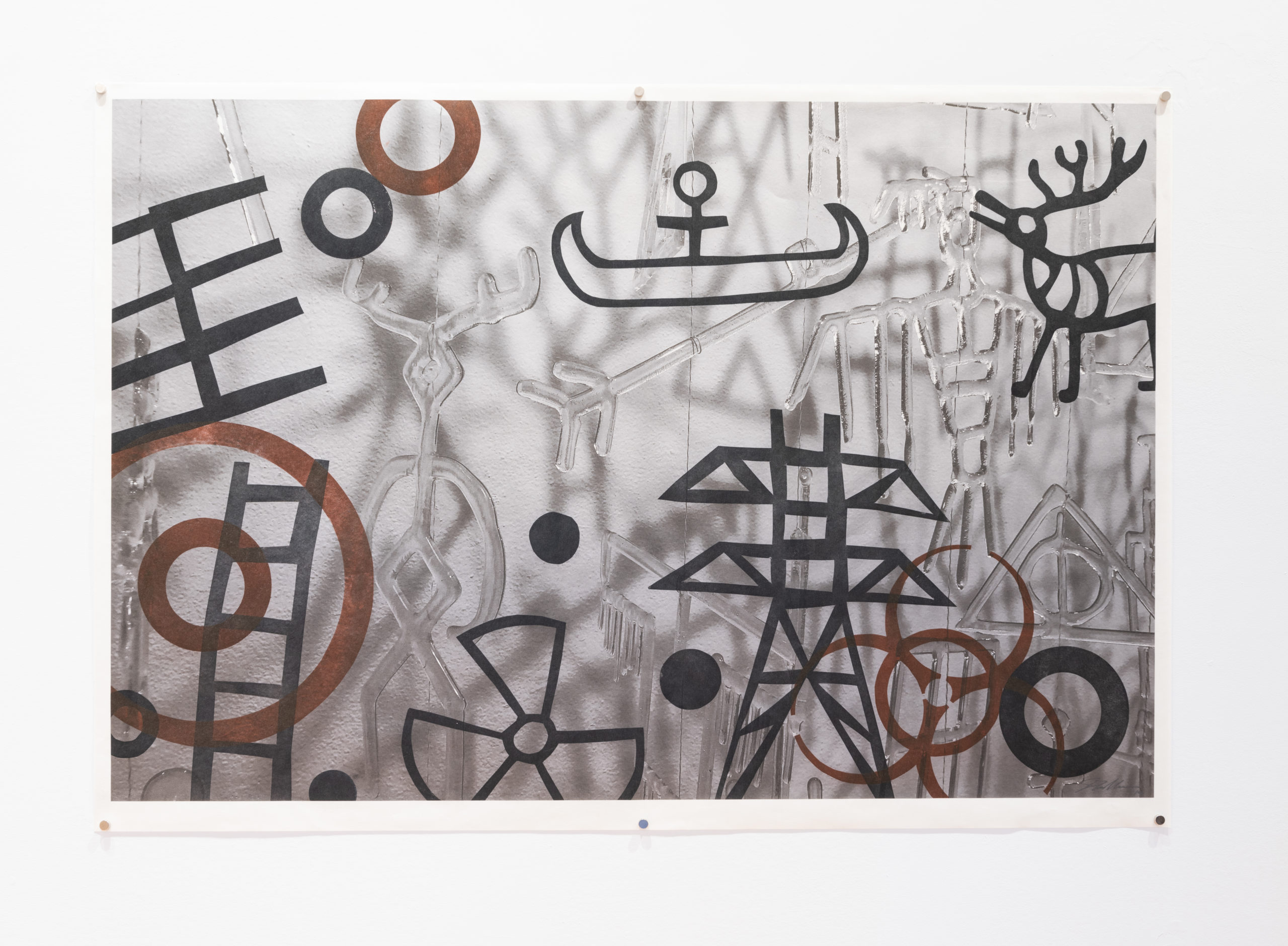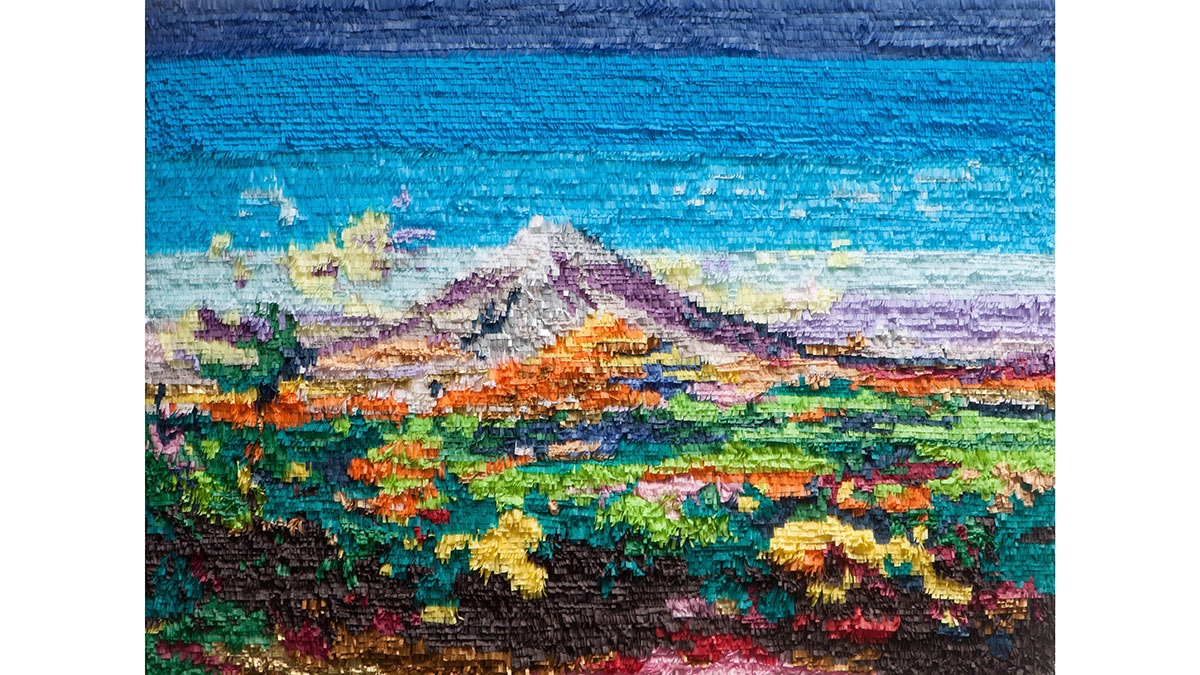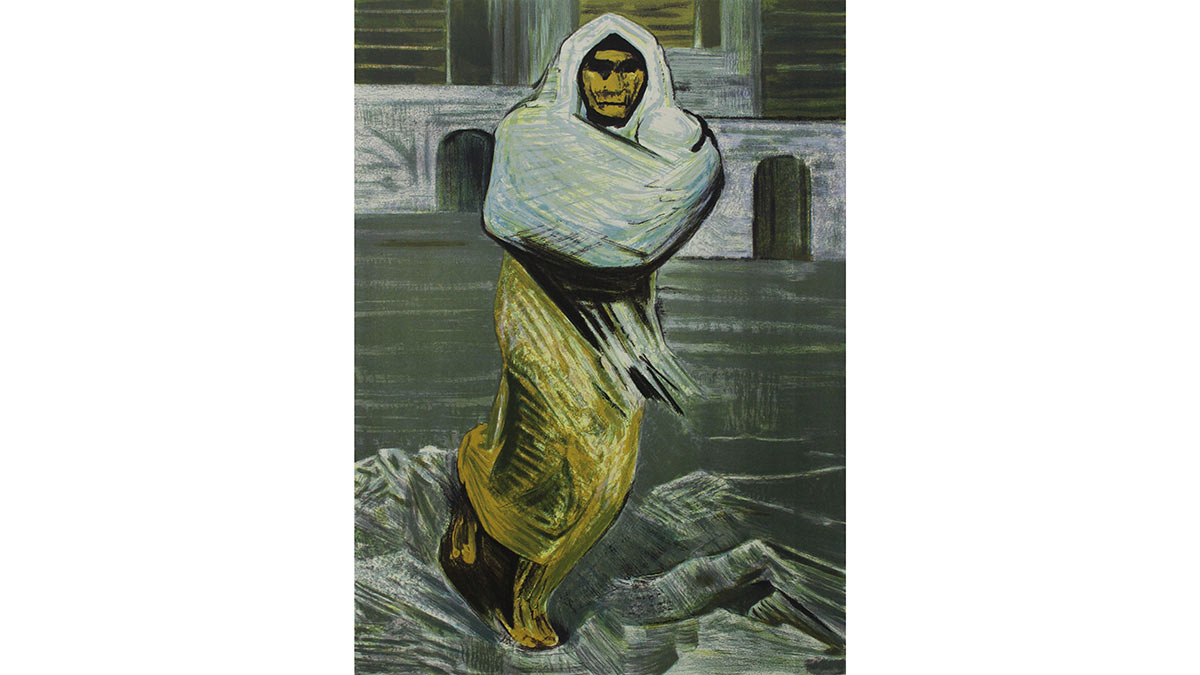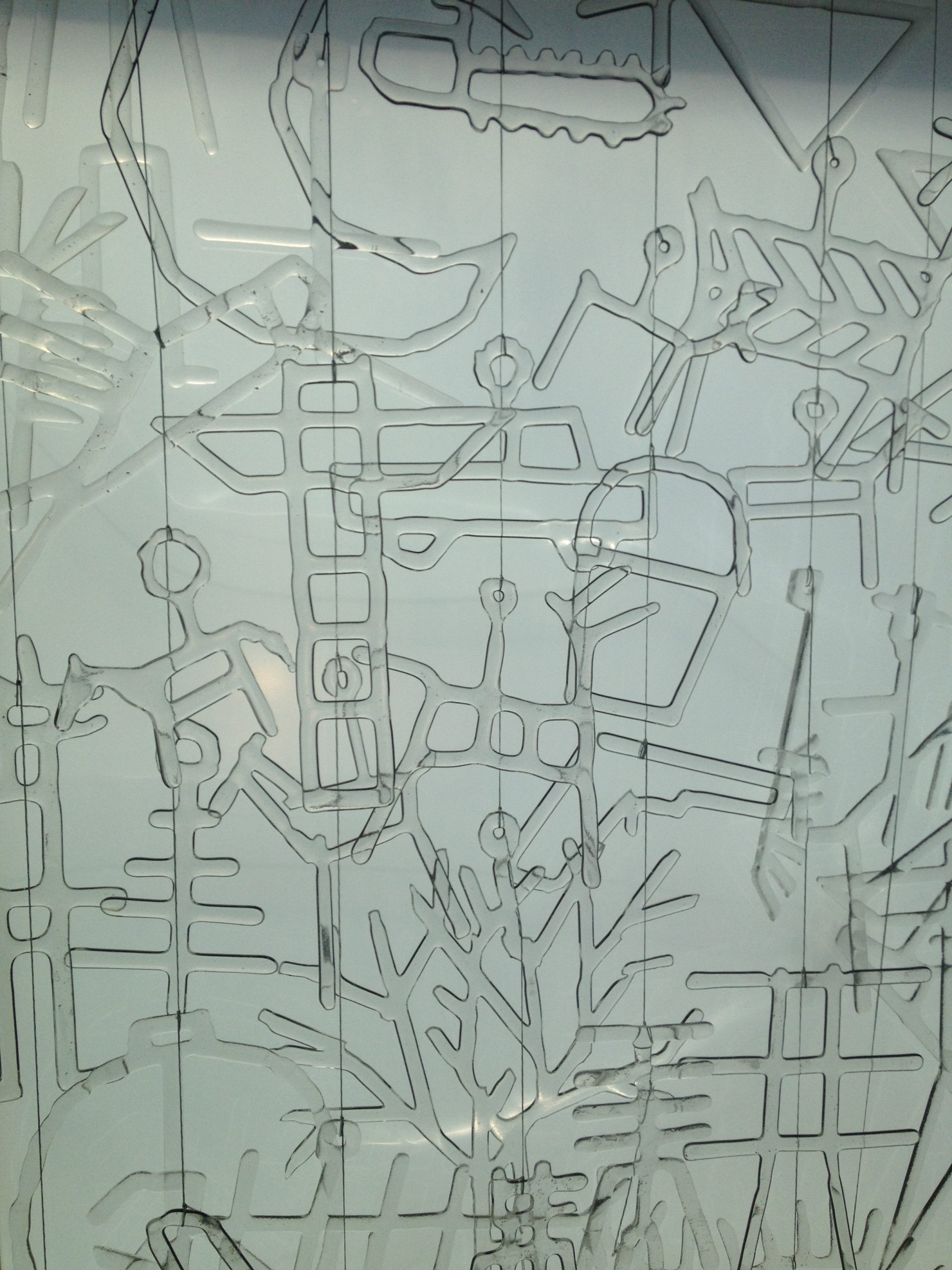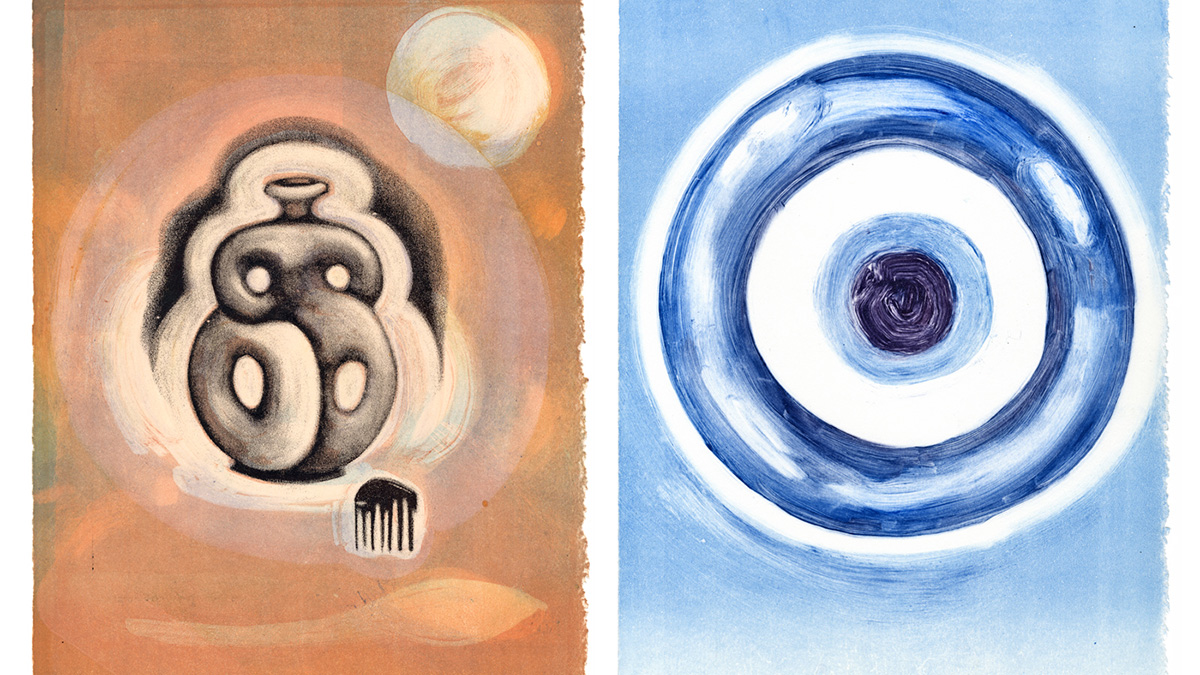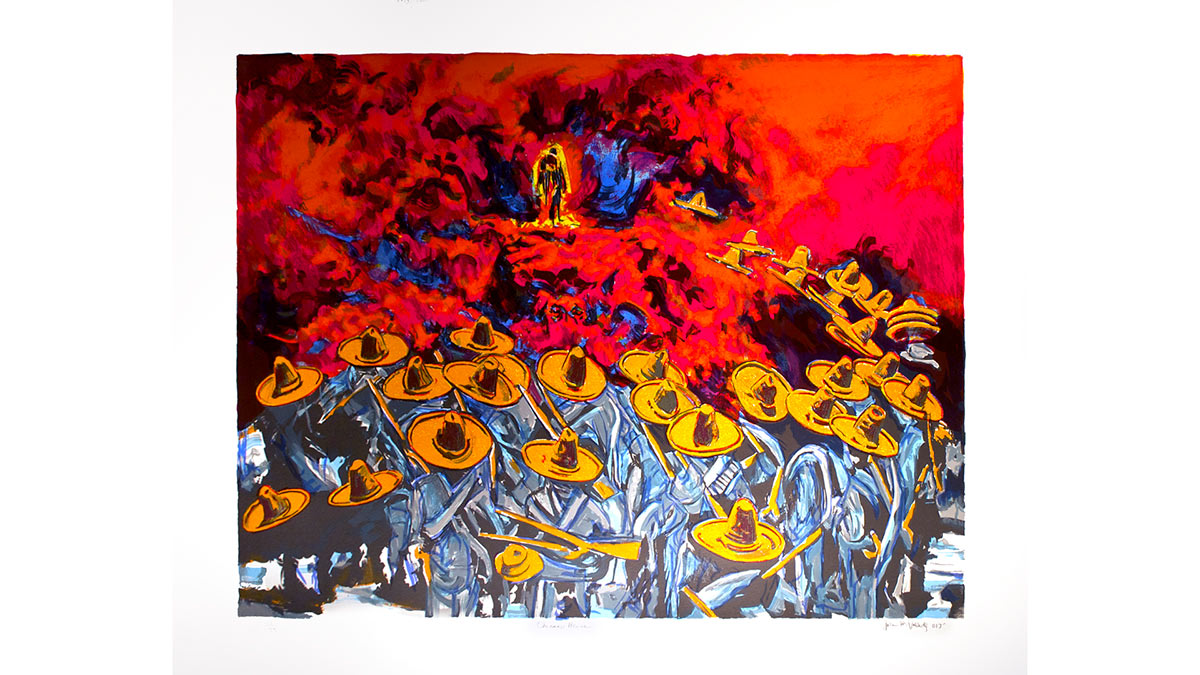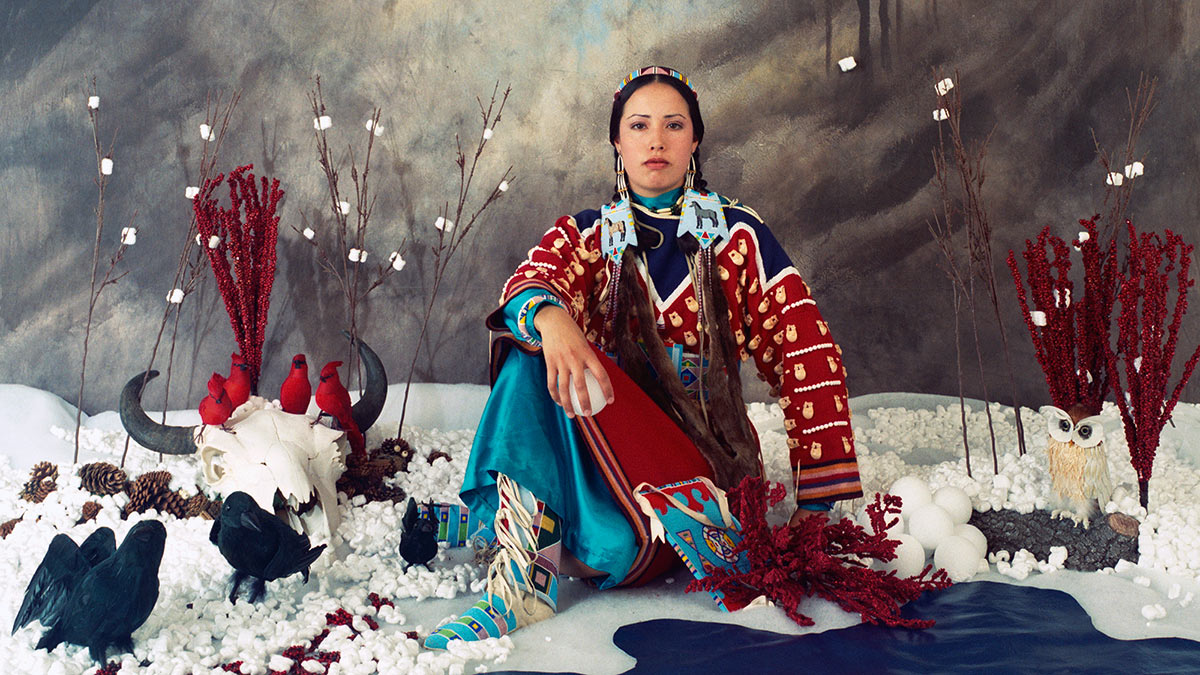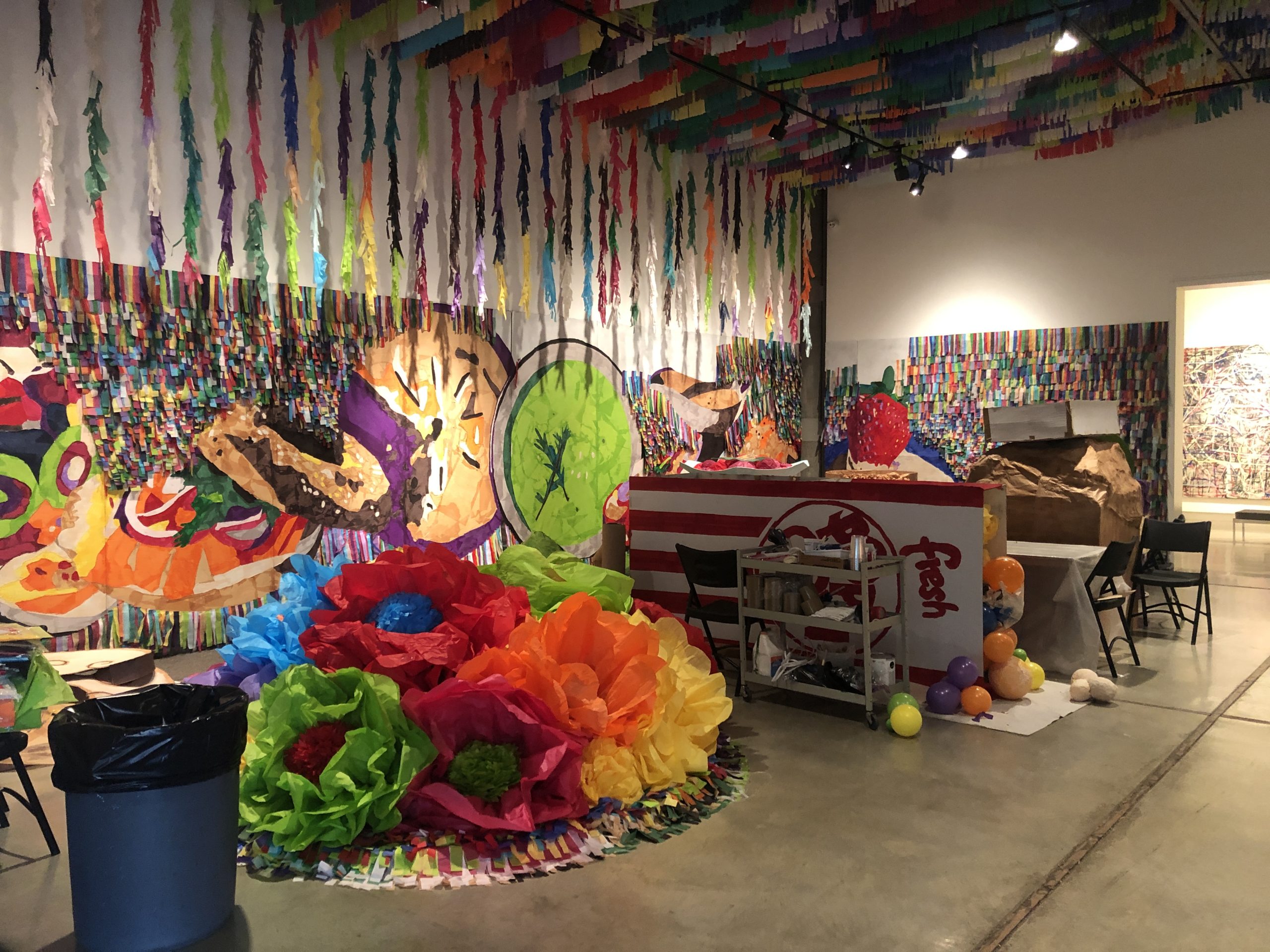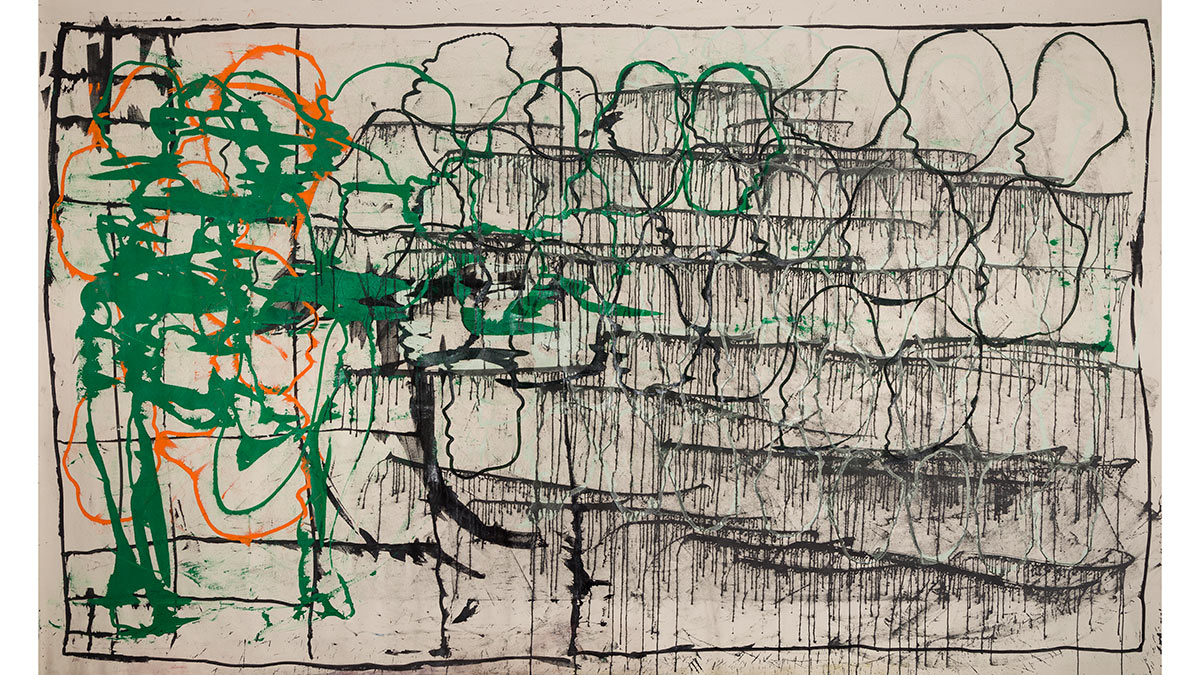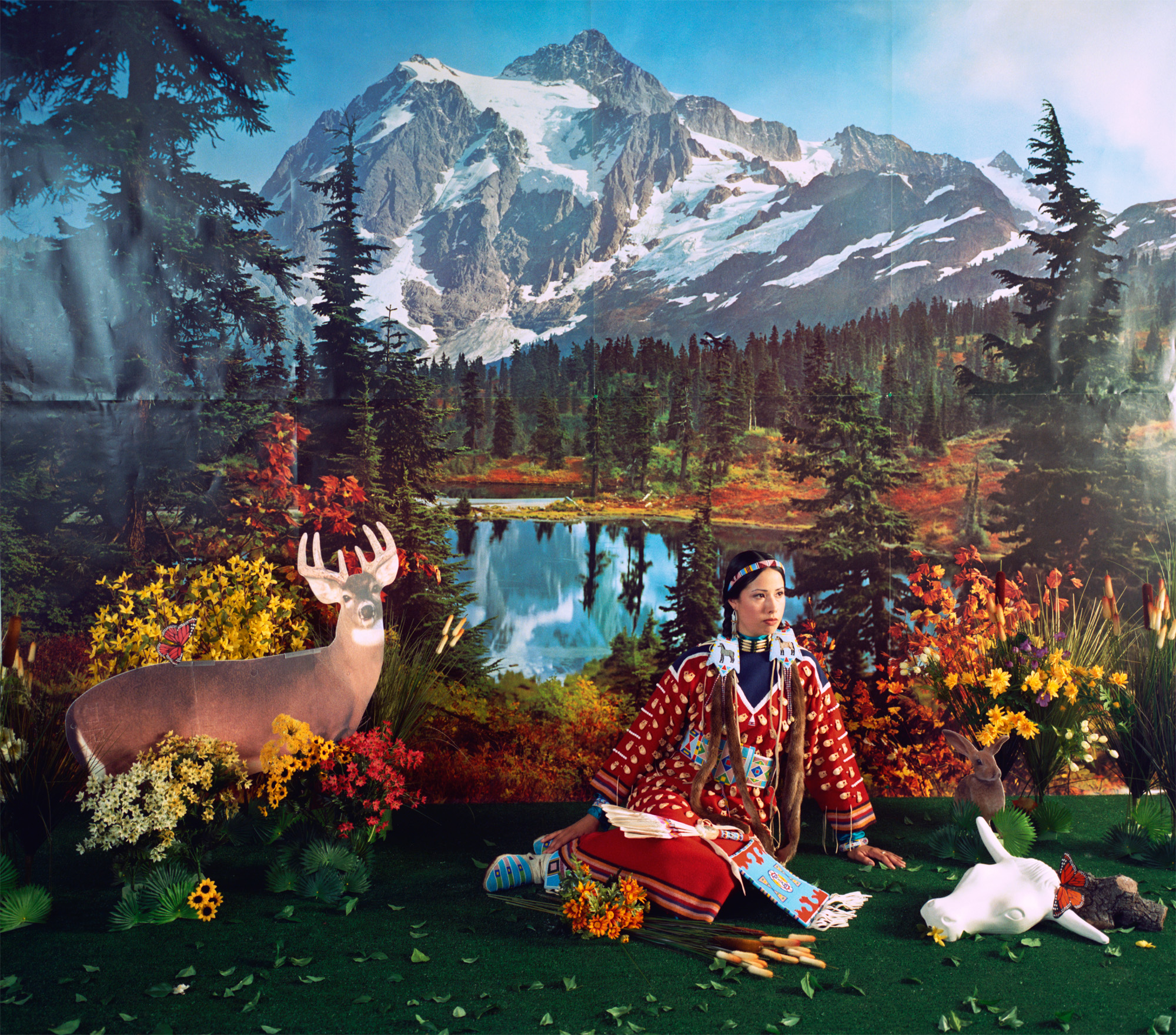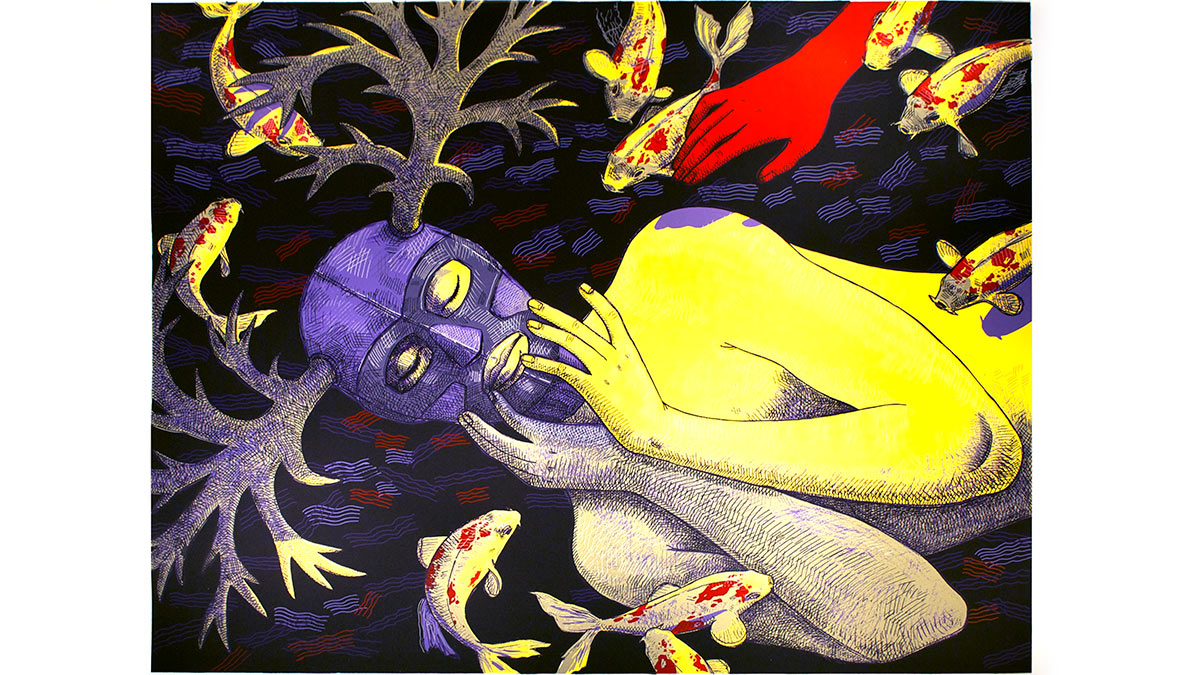Artist Spotlight
Joe Fedderson
By Tyler Noland, SOU ’21
The landscape of the American West was once untouched by industrialization before indigenous tribes were pushed onto reservations, and once pristine landscapes were transformed into the modern world. Joe Feddersen was born in 1953 in Omak, Washington and is an enrolled member of the Colville tribe. In 1872 the U.S. Government created the Colville reservation, downsizing the tribe’s land from 39 million acres to only 1.5 million. Due to government-built Dams, the Colville reservation landscape has been changed and transformed multiple times throughout its history. Feddersen grew up on the reservation and the traditional practice of reading landscapes has had a lasting impact on his work.
In contrast to the work of Wendy Red Star, Feddersen has been a working contemporary artist for much longer, demonstrating the generational gap between both their practices and artistic styles. While Feddersen’s medium has changed over his career, his intrinsic observation of landscape has remained. He focuses on the fact that the land is a constant, and everything else simply changes as years pass and new technologies are reflected on the earth. Feddersen’s piece, “Parking Lot with Stars” is a blown glass vessel decorated in a style that makes the viewer think of traditional indigenous designs, it isn’t until one reads the title that his contemporary take on landscape is revealed. This practice of using more historically traditional imagery in contrast to modern symbolism and influences is common in Feddersen’s artwork.

Fedderesen’s monotype, “Blue Sideways Drips” is on display in the Schneider’s Main Gallery. In this work he again demonstrates his mastery of combining indigenous traditions with urban concepts and artistic practices. Here he uses spray paint in combination with glyph iconography. This use of spray paint reflects a modern interpretation of the origin of the petroglyph. Feddersen is making viewers consider the connotations of using spray paint, and how urban graffiti might fit into the human tradition of marking their landscapes with symbols.
Almost all of Feddersen’s work on display in the Winter Exhibition was made more recently in his career and his work, especially with petroglyphs, includes more recent technology such as iPhone and robots in tandem with elk and the night sky. Viewers can use Feddersen’s artwork as a lens to examine the fleeting nature of the landscapes we so often take for granted. The face of the earth will continue to change with the times, but the land itself remains constant.
The Winter Exhibition Two Generations: Joe Feddersen & Wendy Red Star will be on display in the Schneider Museum of Art in Ashland, OR until March 14th, 2020.
Tyler Noland is a junior Creative Writing major at Southern Oregon University. She is originally from the Bay Area, and this is her second year at the Schneider Museum of Art. While not working on her writing she enjoys thrifting for her newest funky outfit.
